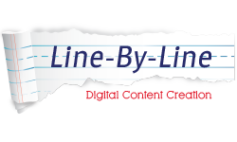Are you a business owner that is consistently creating engaging content for your business?
Or are you a business owner that WANTS to consistently create engaging content for your business, but you just don’t know where to start?
If you fall into the first category, you’ve got it figured out. Great job!
But if you fall into the second category, don’t feel bad. Most people recognize the important role content plays in their business, but creating it gets placed on the back burner. Sometimes it’s because they are busy dealing with other aspects of their business, and sometimes it’s because they don’t know where to start.
So keep reading, because I’m going to provide you with some information that will help you get it done.
Here’s where to start: It’s with the needs of your target audience.
The Buyer’s Journey
Last year, I earned an inbound marketing certification through HubSpot. As I made my way through the certification modules, one thing I learned about was the concept of your customers’ buyer’s journey.
HubSpot describes the buyer’s journey as the process an individual goes through before purchasing a product or service.
I’m sure you can recall many examples of your own buyer’s journeys. I remember buying my first car, and how long I researched and test drove vehicles before making a decision.
And most recently, I decided that I needed to push my fitness goals, and wanted to use an app to help me make the most out of running.
For both purchases, one being a big purchase and the other not so much, I went through a decision-making process. Although I really didn’t think about it as a “buyer’s journey” at the time, that’s exactly what it was.
The buyer’s journey is defined in three stages: the awareness stage, the consideration stage, and the decision stage.
The Awareness Stage
In the awareness stage, your audience is just figuring out that they have a need or a problem, and they are in research mode.
When I decided I needed to step it up and get in better shape, I researched the best way to get fit and the benefits of running. I’ve been an off and on runner for years, and I’m not consistent because it’s not my favorite form of exercise. I started my research by learning about the benefits of running, the results I could expect from it, and the success other women my age had with it.
At this point in my research, I was just gathering information. I didn’t want to be hit over the head with a complicated case study or an expert guide to try to convince me to run.
I also didn’t want to be overwhelmed, oversold, or forced specific literature about a particular running app.
Like me, your audience in the awareness stage is just starting to research more about their problem or need. Your content at this point should be educational and yes, unspecific to your product or service.
You may want to write an informative blog about your industry, or tell a story about different options to solving your audience’s problem. You could also write a general e-book that contains facts, figures or statistics of your industry that would give them the information they are looking for.
The Consideration Stage
In the consideration stage, your audience’s problems are more clearly defined, and they are trying to learn more about them.
For me, I decided a running app was the way to go, but I was still learning which ones were available. I read about the features each offered to determine what would work best for me. I wanted something that would motivate and push me. But my goal was to improve my endurance and be healthier, not train for a marathon. This helped to narrow down the choices available.
When your audience hits the consideration stage, they are also interested in gathering information in order to solve their problem. They’ve identified they have a need, and now they are researching to figure out the best route to satisfying it. Your content for this stage can be a little more specific, and could include expert guides, videos, podcasts or in depth white papers.
The Decision Stage
When your audience reaches the decision stage, they are choosing among solutions or providers in order to solve their problem.
Once I had narrowed my choices to a few running apps, I read reviews and took note of special offers. I learned the pros and cons, the positives and negatives, and the reported outcomes. I also looked at price.
At this stage, your audience is looking for what you have to offer. This is where writing detailed product reviews or offering sales or free trials could be effective.
It’s okay to “sell” here, because the customers know what they need and are trying to make a decision. And your product or service may be a perfect fit.
So after much research, I made my decision. I took advantage of a free version of a running app that I could upgrade later if I liked it. When I downloaded the free version, I was also offered a 7-day free trial of the upgrade, with no obligation to buy if it didn’t end up being what I was looking for. I’ve been happy with my selection so far. After I’ve had a chance to use the free version, I’m open to accessing additional features by purchasing the upgrade.
Defying the Hard-Sell
The key to crafting engaging content for your audience is to create it for each stage of the buyer’s journey. Then you can deliver it when your audience needs it the most.
No one likes to be “sold” to, and that includes me. Nothing turns me off more than when someone launches into their sales pitch before understanding what I’m looking for, or if I even have a need for their product or service. I’ll shut down even if their product is the best invention ever and is exactly what I need.
The best part about creating content for the buyer’s journey is that you don’t have to be that annoying sales person. Instead, you are in the business of educating. You’re providing information that meets them at whatever stage of the process they are in. You become the hero, instead of that pushy sales person everyone runs from.
You are giving your audience the content they need, when they need it.
So when you are trying to figure out what type of content to write for your business, think of your target audience’s buyer’s journey. Brainstorm the types of content your audience will be looking for at each stage. Then place your ideas on an editorial calendar, and make a plan to get it done.
And if you need help, you can always contact me.

